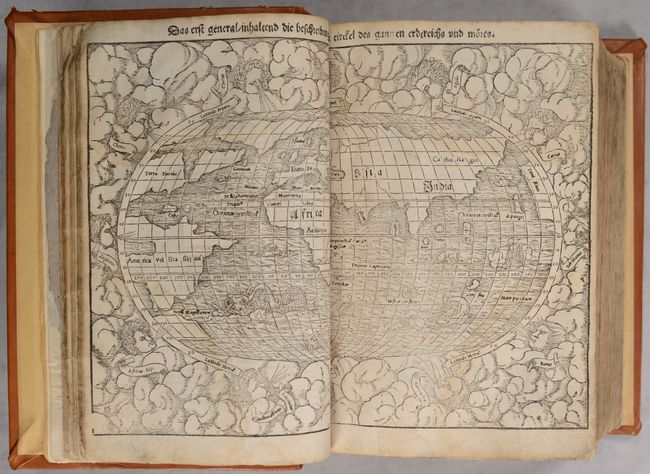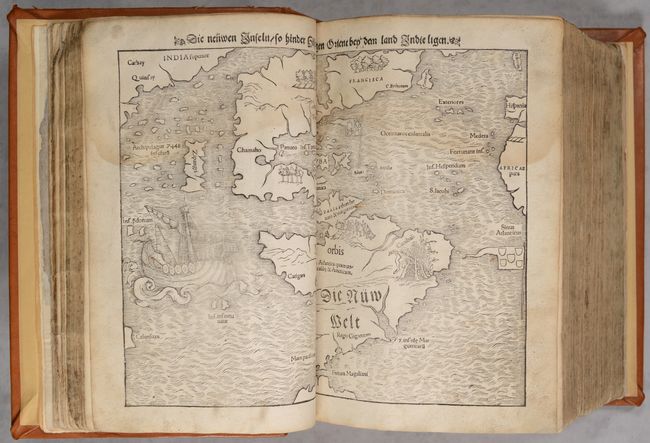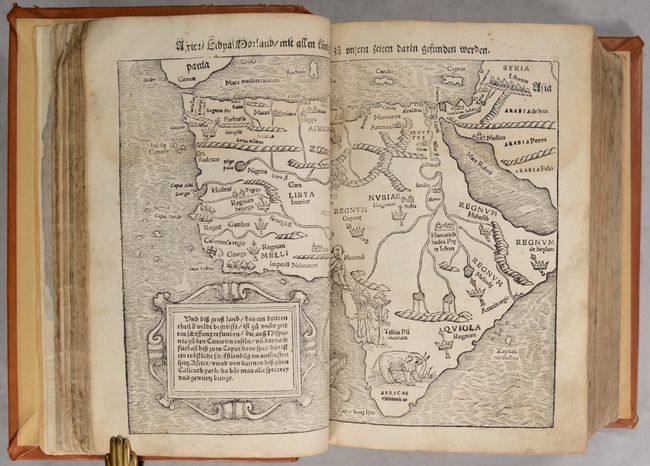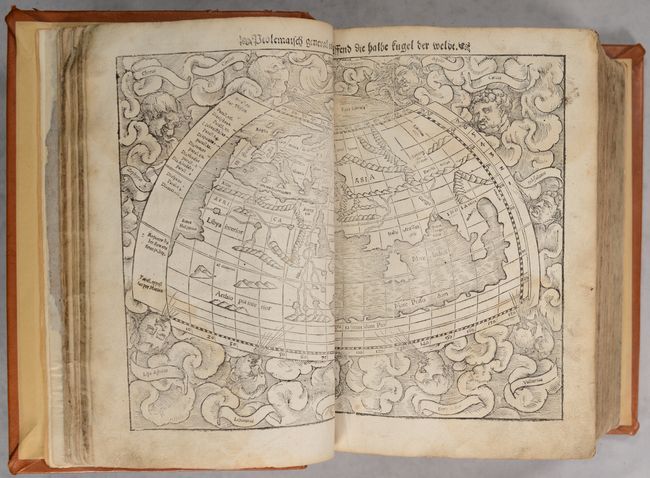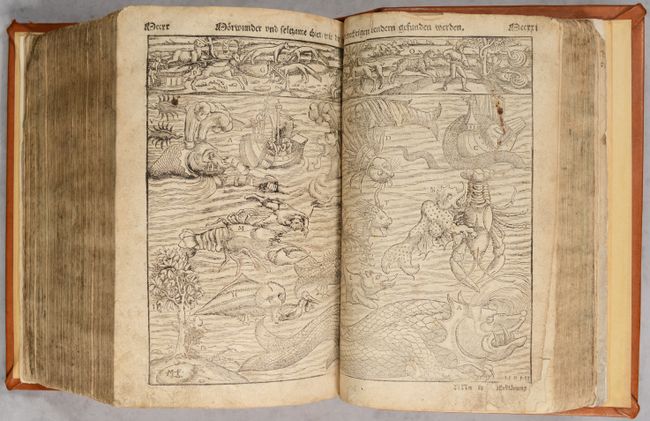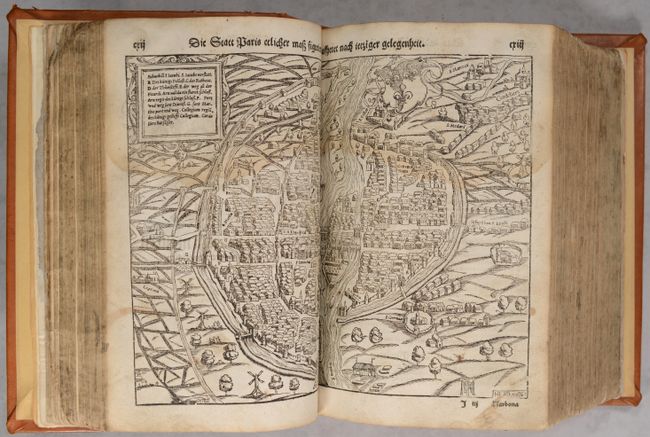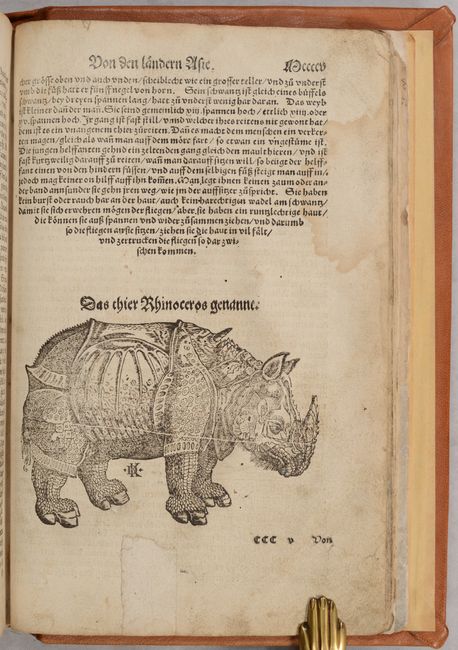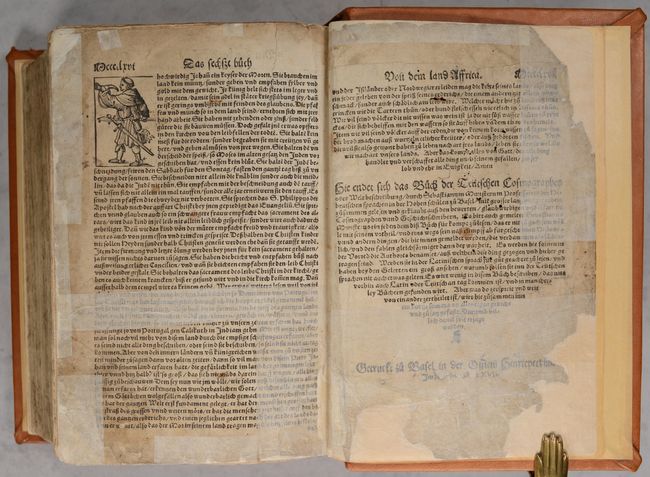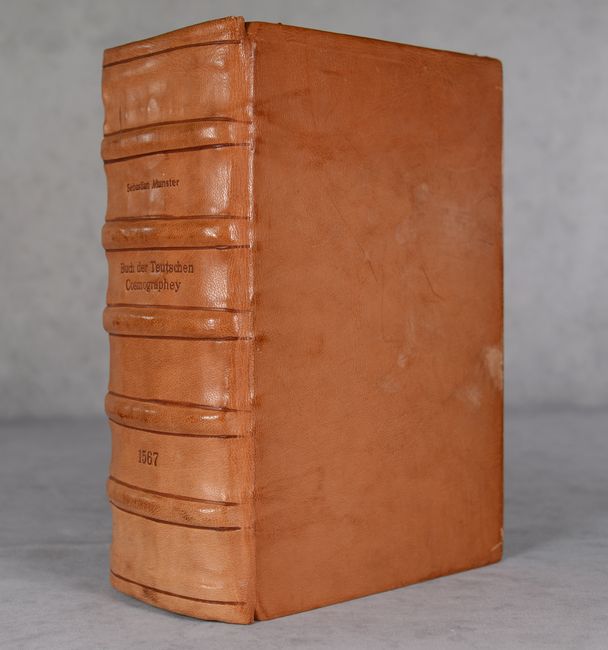Subject: Atlases
Period: 1567 (published)
Publication:
Color: Black & White
Size:
8.8 x 12.5 inches
22.4 x 31.8 cm
Sebastian Munster (1489 - 1552) was one of the three most renowned cartographers of the sixteenth century, along with Mercator and Ortelius. Munster's Geographia and Cosmographia Universalis were two of the most widely read and influential books of the period. His editions of Ptolemy's Geographia, published between 1540 and 1552, were illustrated with 48 woodcut maps, the standard 27 Ptolemaic maps supplemented by 21 new maps. These new maps included a separate map of each of the known continents and marked the development of regional cartography in Central Europe. The antique geography was a prelude to Munster's major work, the Cosmographia, which was published in nearly 30 editions in six languages between 1544 and 1578 and then was revised and reissued by Sebastian Petri from 1588 to 1628. The Cosmographia was a geographical as well as historical and ethnographic description of the world. It contained the maps from the Geographia plus additional regional maps and city views with nearly 500 illustrations which made it one of the most popular pictorial encyclopedias of the sixteen century.
Sebastian Munster probably had more influence in spreading geographical knowledge throughout Europe in the mid-sixteenth century than any of his contemporaries. His Cosmographia contained not only the latest maps and city views, but also included an encyclopedic amount of detail about the known, and unknown, world and its history. Henrich Petri, step-son of Sebastian Munster, was the publisher of Munster's Geographia and Cosmographia. After the death of his father in 1579, Sebastian Petri took over the publishing business and commissioned a completely new set of woodblocks for the Cosmographia. Over the years, the text was enlarged and new maps were added.
This German edition includes two world maps, the four continents, 8 regional maps, plus over 1000 woodcuts including 32 double-page plans and 69 smaller maps and plans. Also included is the famous plate of Munster's Monsters and engravings of exotic animals such as the rhino. As is commonly found with the Cosmographia, the volume is not complete, missing 24 (of approximately 810) leaves. The missing pages include the frontispiece, preface, and 9 of the maps: Venice, Worms, Eyfalia, Cologne, Erfurt, Baltic, Heidelberg (only half missing), Frankfurt (only half missing), and Vienna (only half missing). Folio. [68] pp.; [15] pp.; 14 double-page maps; 1467 pp. with over 1000 woodcuts and 101 maps and plans (out of 110). Handsomely rebound in thick, full tan leather covers with raised bands and titling on spine and new endpapers.
References: Betz #3; Burden #12; Mickwitz & Miekkavaara #157; Shirley #76 & #92; Walter #8; Yeo #2.
Condition: B
The entire volume has light to moderate dampstains throughout and occasional soiling. There are archival tissue repairs to some chips and tears on the first 8 leaves and the last 7 leaves in the volume. A handful of additional pages scattered through the text have chips or tears, some of which have been repaired with old paper. The new binding is tight and the modern covers have some small scuffs.


